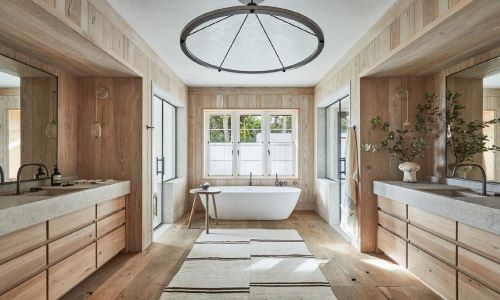Choosing the Perfect Material for Your Bathroom Vanity: A Comprehensive Guide
 By
By
When it comes to designing or renovating
your bathroom, selecting the right vanity material is crucial. The vanity
serves as the focal point of the bathroom, not only in terms of functionality
but also aesthetics. With a plethora of options available in the market, it can
be overwhelming to determine which material is best suited for your bathroom
vanity. In this guide, we'll delve into the pros and cons of various materials,
with a particular focus on solid wood bathroom vanities, addressing common
questions such as "Can you have wood vanity in the bathroom?" and
"What is the best wood for a bathroom vanity?"
Solid Wood:
Engineered
Wood:
MDF
(Medium-Density Fiberboard):
Plywood:
Yes, you can have a wood vanity in the
bathroom, provided that it is properly sealed and maintained. Solid wood
vanities, when treated with a waterproof sealant, can withstand the humid
conditions of the bathroom without succumbing to damage. However, it's
essential to wipe up any standing water promptly and avoid prolonged exposure
to moisture to preserve the integrity of the wood.
The best wood for a bathroom vanity depends on various
factors, including your aesthetic preferences, budget, and maintenance
requirements. Here are some popular wood options for bathroom vanities:
Selecting the best material for your
bathroom vanity is a crucial decision that impacts both the functionality and
aesthetics of your space. While solid wood bathroom vanities offer timeless
beauty and durability, engineered wood, MDF, and plywood provide cost-effective
alternatives with varying levels of moisture resistance. By considering factors
such as durability, maintenance, and style preferences, you can choose the
perfect material for your bathroom vanity that complements your overall design
scheme and withstands the test of time.What is the Best Material for a Bathroom
Vanity?
Can You Have Wood Vanity in the Bathroom?
What is the Best Wood for a Bathroom Vanity?
Conclusion




